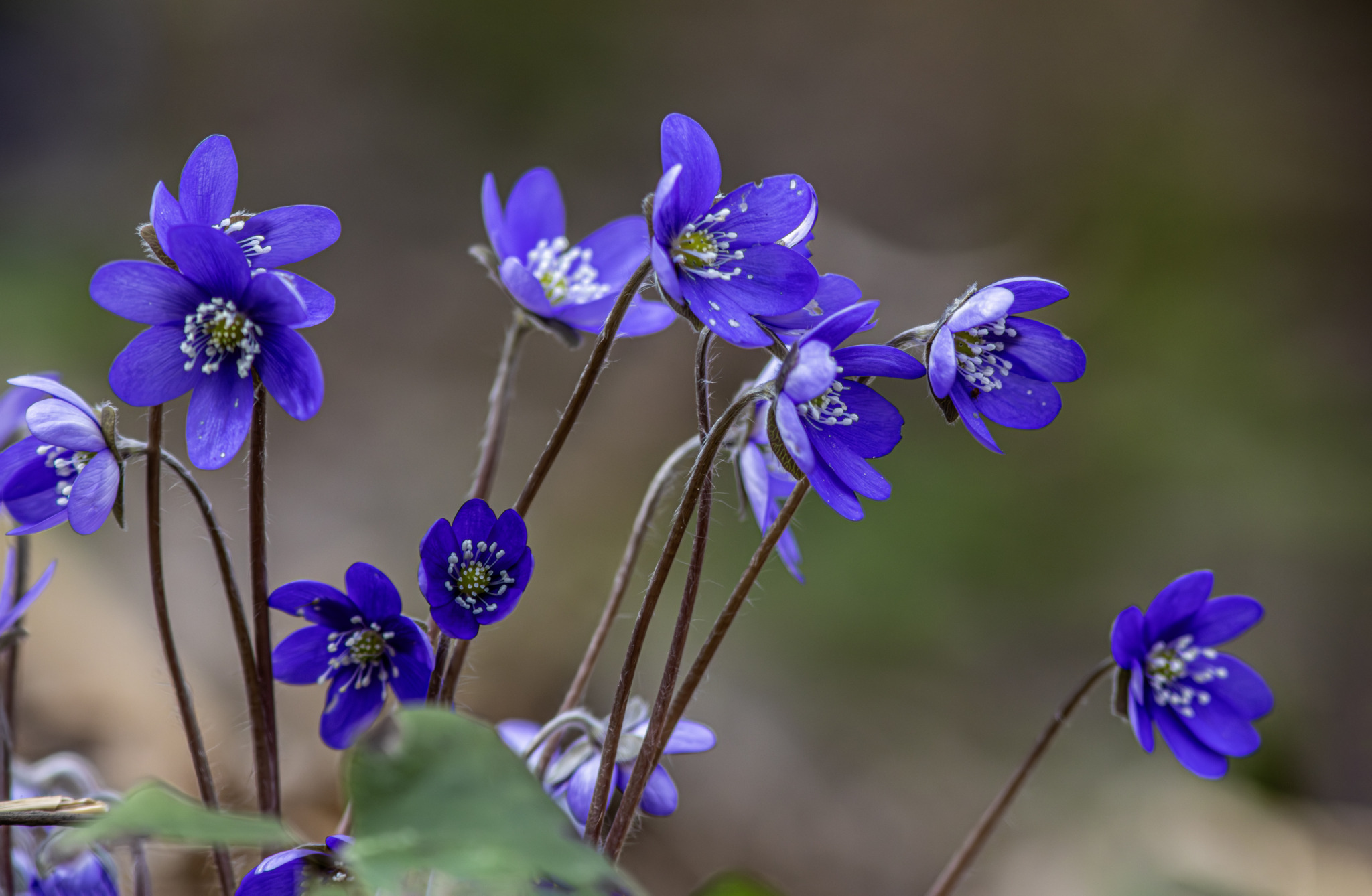The Common Hepatica (Hepatica nobilis), also known as liverwort, liverleaf, or kidneywort, is a small flowering plant belonging to the buttercup family, Ranunculaceae. Here’s some information about this beautiful wildflower:
- Appearance: Common Hepatica is a low-growing perennial herb that typically reaches heights of 5 to 15 centimeters (2 to 6 inches). It has three-lobed leaves that resemble the shape of the human liver, hence its common name “liverwort.” The leaves can vary in color from deep green to reddish-purple. The flowers are solitary and bloom in early spring before the leaves fully emerge. The flowers have six to twelve petal-like sepals, which come in shades of blue, violet, pink, or white, and surround a central cluster of stamens and pistils.
- Habitat: Common Hepatica is native to temperate regions of Europe, Asia, and North America. It can be found in a variety of habitats, including deciduous woodlands, meadows, slopes, and rocky areas. It prefers moist, well-drained soils with dappled shade.
- Distribution: Common Hepatica has a wide distribution range across its native range, where it is often one of the earliest wildflowers to bloom in the spring. It can form dense carpets of flowers in suitable habitats.
- Pollination: Common Hepatica flowers are pollinated by early-emerging insects such as bees, flies, and beetles. The plant also reproduces vegetatively by forming small bulbils at the base of its leaves, which can develop into new plants.
- Cultural Significance: Common Hepatica has been admired for its beauty and early flowering since ancient times. It has various cultural associations and uses, including medicinal, culinary, and ornamental purposes. In traditional herbal medicine, the plant has been used to treat liver ailments, hence its name “liverwort.”
- Conservation: While Common Hepatica is not considered globally threatened, it may face localized threats from habitat loss, habitat degradation, and climate change. Conservation efforts aimed at preserving and restoring woodland habitats and protecting wildflower populations can help ensure the continued survival of this species.
Overall, the Common Hepatica is a delightful wildflower appreciated for its early spring blooms, charming appearance, and cultural significance. It is a welcome sight in woodlands and gardens, signaling the arrival of spring after the winter dormancy.
Visited 182 times, 17 visit(s) today
Views: 324
Subscribe to the newsletter:
